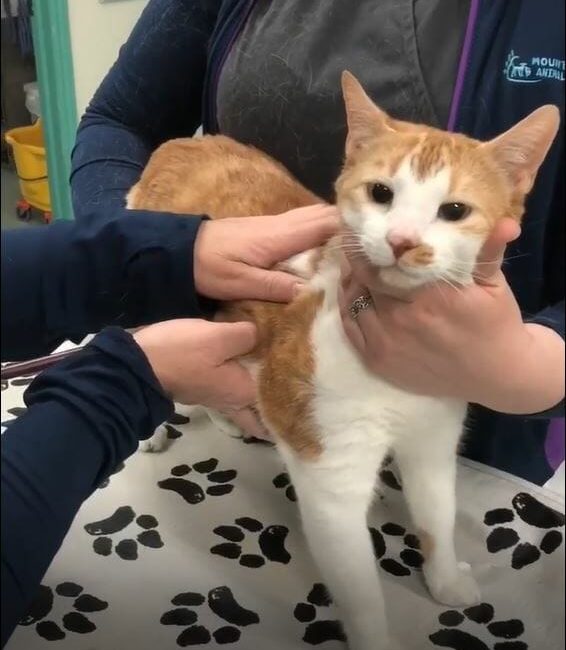Check out this video that takes you behind-the-scenes of a dental cleaning.
The patient is left in our care at the clinic
Then a sample of the patients’ blood is taken by our registered veterinary technicians to evaluate liver, kidney, etc. and a complete blood count prior to surgery.
A pressure bandage is usually applied in order to stop the bleeding, this is the same as we get when we get our blood taken
The patient is then examined by a doctor. The doctor does an overall exam which includes listening to the patient’s heart to ensure there is no murmur or arrhythmias as well as any issues with lungs that would prevent anesthesia from being performed. We also check their temperature with animals this is done rectal to ensure they have no fever.
Once the doctor gives their approval to proceed, the patient receives an injection of a premedication, this is usually given into the muscle of the patient. The premed helps by giving the patient pre-emptive pain medication as well as helps them become sleepy so everything else goes smoother.
After about 15-20 minutes (this is the time needed for the premedication to take effect) the patient has an intravenous catheter placed by the technicians.
Once the intravenous catheter is in place, they are then given an induction agent to make them go to sleep in order to have a tube placed into their trachea. Then the patient is intubated and placed on an inhalant anesthetic.
Once the patient has been placed under anesthetic, monitors are placed on them to monitor heart rate, oxygen and blood pressure. At this time a nail trim is also performed and lubricant is placed in the eye to prevent them from drying out as they are not always closed throughout the procedure. It is also used to prevent any dirt/debris from entering the eye.
Once the patient is stable, the technician begins taking dental radiographs of the teeth. This helps to determine whether certain teeth need to be removed (if showing bone loss, pockets around teeth, or abscesses).
Once radiographs are done, the doctor and technician begin charting the teeth on a dental chart. This is where any abnormalities are noted.
If the doctor decides a tooth needs to be removed based on radiographic and visual evidence, then extraction of the tooth is started.
A numbing agent is then injected into the patients nerve to freeze the roots of the tooth. People get these needles as well if we are having a tooth removed – however, people get them while awake.
After the numbing agent has taken affect, the doctor will begin the extraction. First, a gingival flap is created by making a small incision in the gum. A tool called a gingival elevator is used to slowly remove the gum away from the tooth. Once this is done, the doctor can then visualize the roots, and cut the tooth in half using a drill. Once the tooth has been cut, it is then elevated using dental elevators and luxators and gentle persuasion to slowly release the root from the bone. Once done, the piece of tooth is removed using extractors. After the tooth has been completely removed, it is then packed with a bone graft, sutured and closed.
After all extractions have been completed, the technician takes over from the doctor and completes the dental by scaling the teeth, then polishing them on the inside and outside.
To commence recovery, inhalant anesthetics are turned off, the tube is removed from the trachea, and the patient is placed in a kennel for recovery. Throughout the entire procedure, the patient is consistently monitored by an assistant or a technician until they are fully recovered and able to go home.
Written by: Mountain Road Animal Hospital



